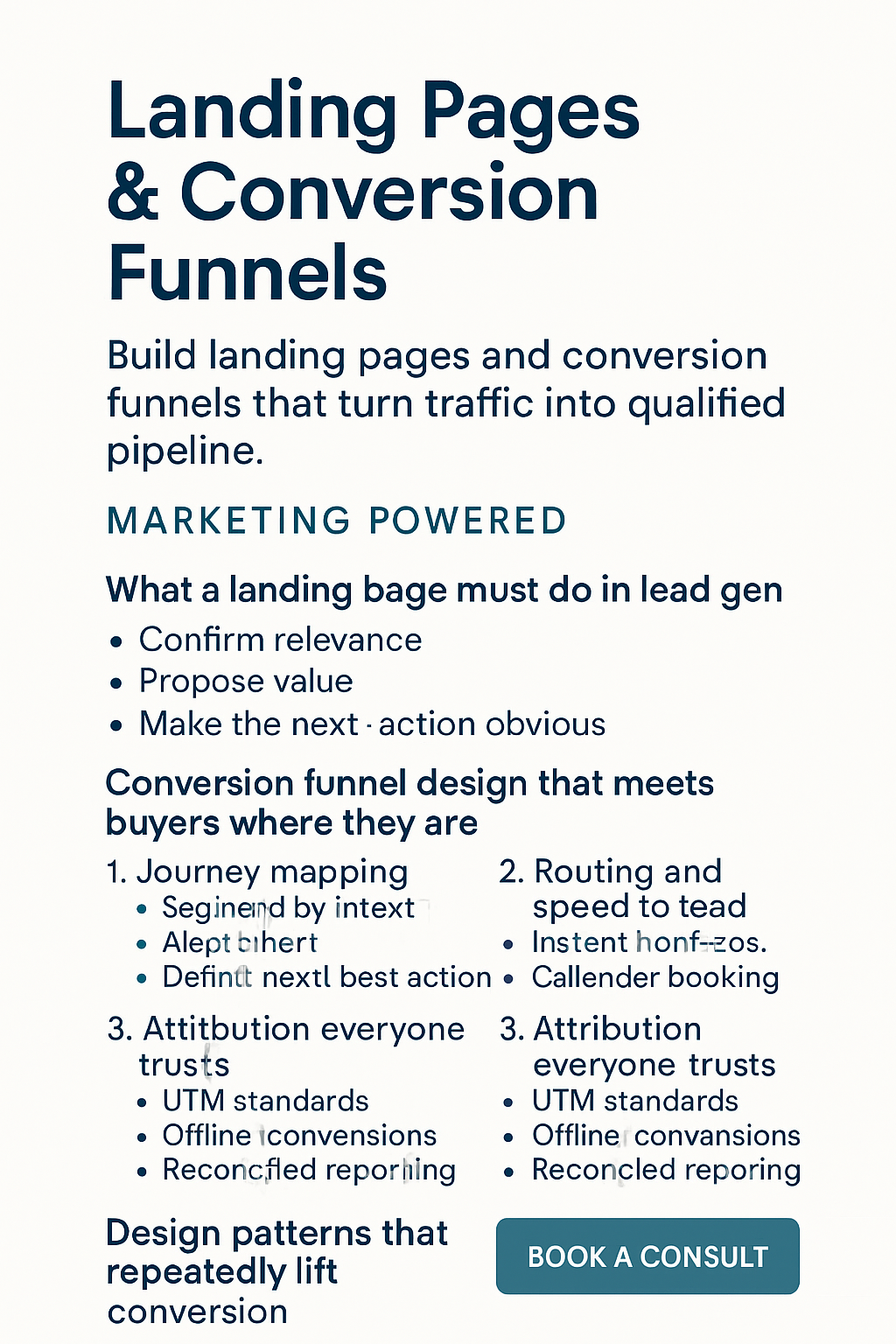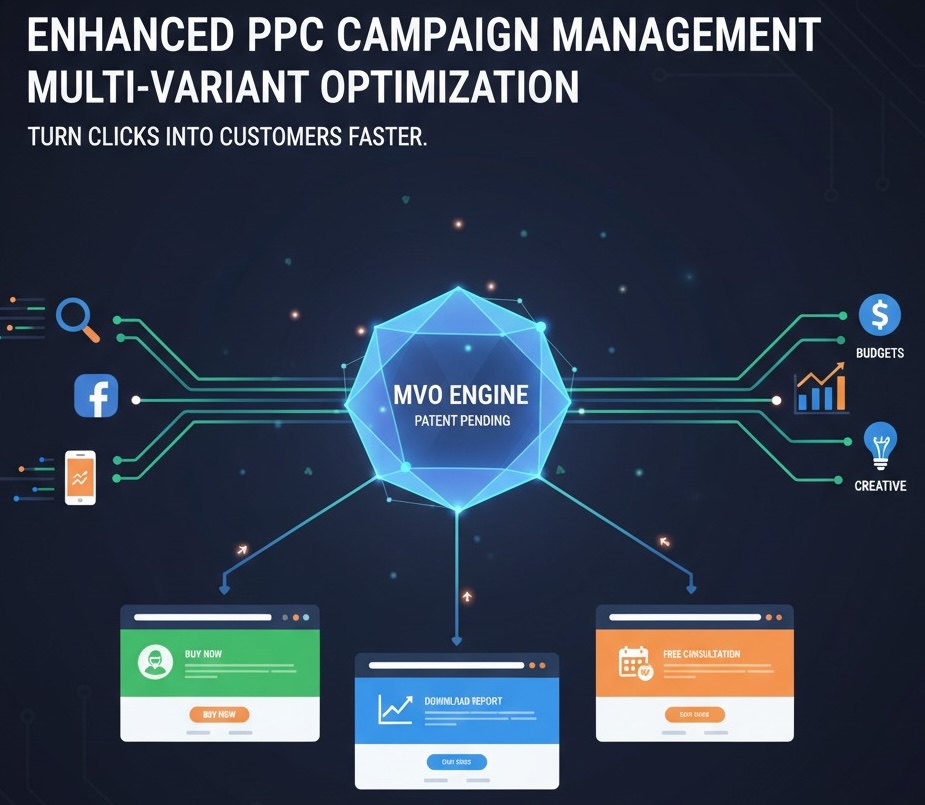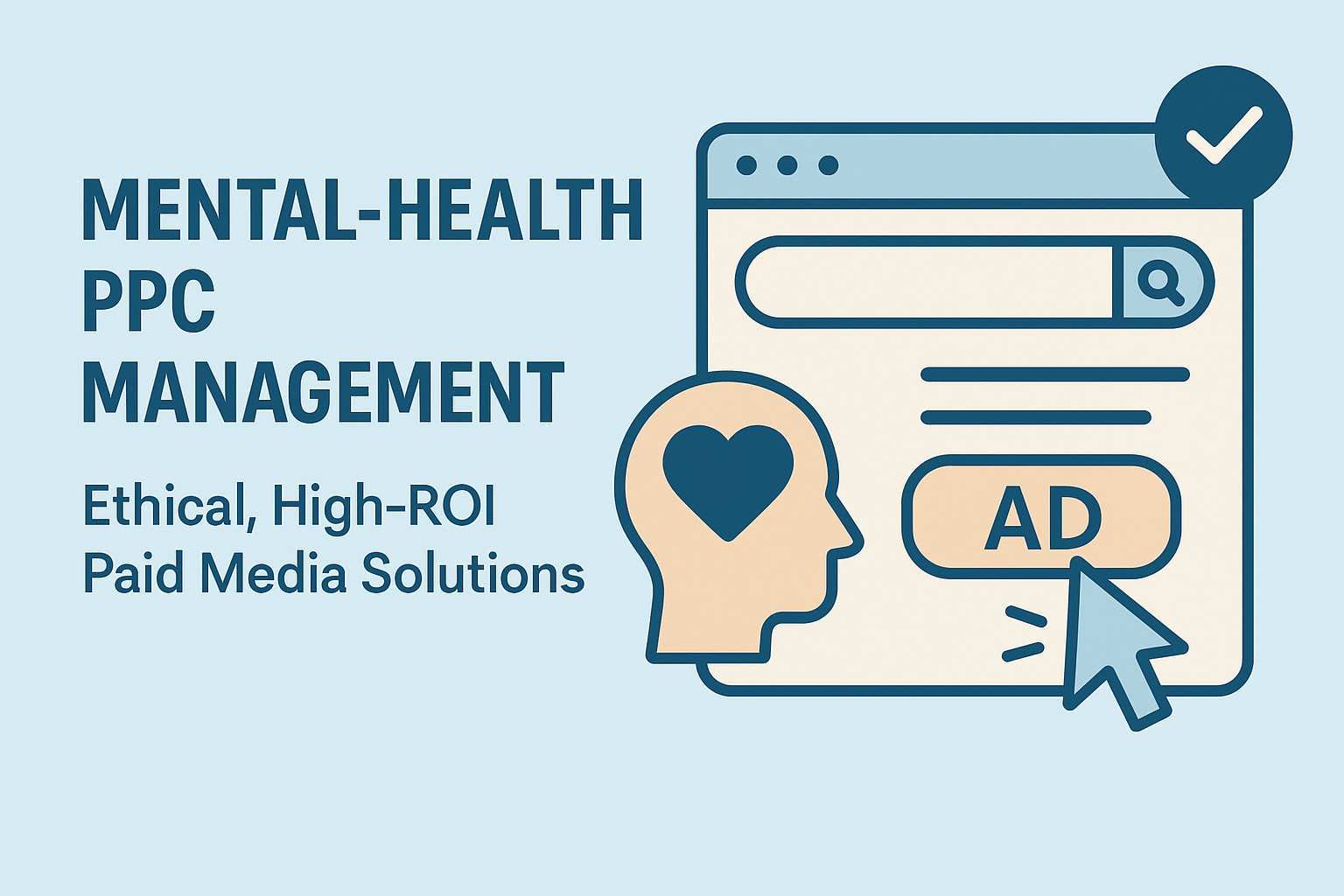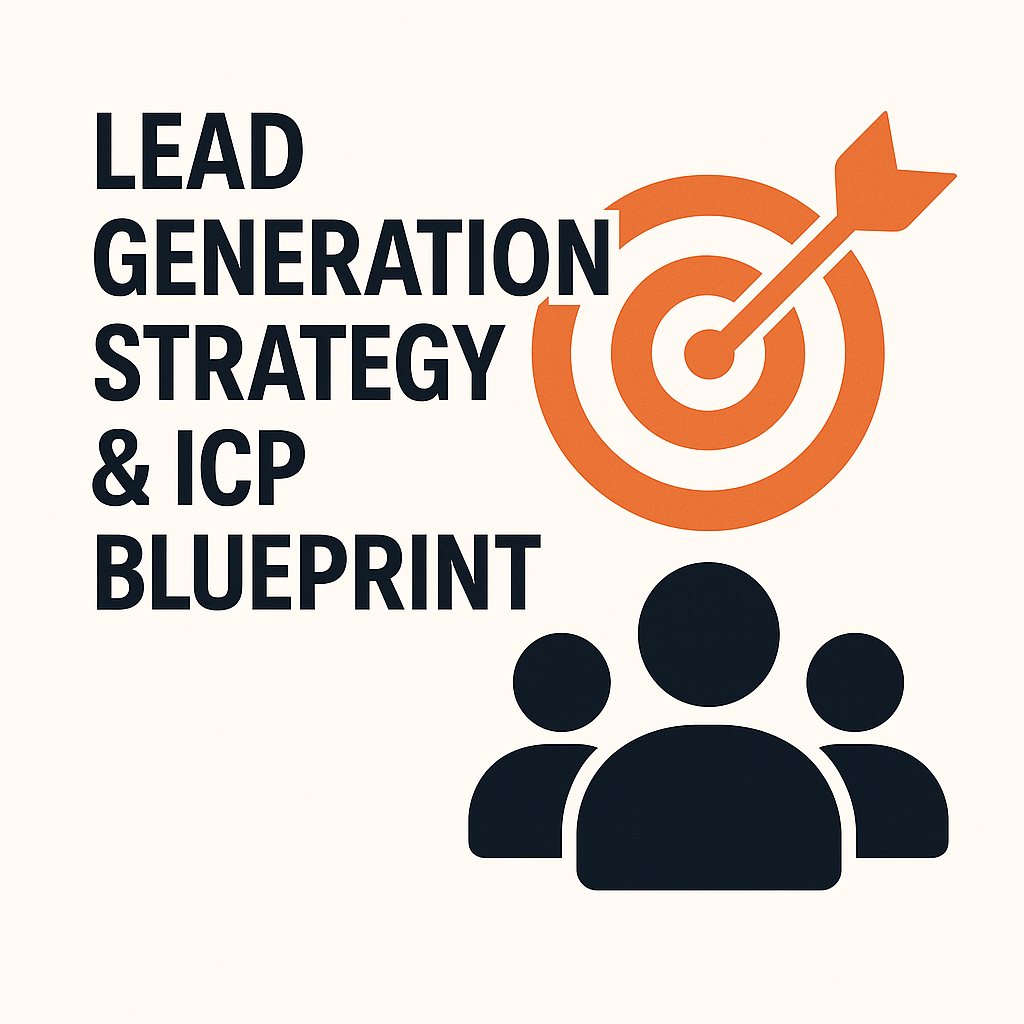High intent traffic deserves pages and journeys that convert on the first visit or set up the next best step. Marketing Powered plans, designs, and iterates funnels that move visitors from click to qualified lead, then into your CRM with clean attribution and sales‑ready context. This cluster page is built with topic clarity, structured elements, and schema so it performs in search and answer engines.
What a landing page must do in lead gen
A high performing landing page does three things fast: confirms relevance, proposes value, and makes the next action obvious. That action might be a short form, a calendar, a call, or a content download that sets up nurturing. The copy and layout should answer core questions in the first screen: what you offer, who it helps, how it works, and what happens after the click. Our default section order: headline with outcome, 1–2 line proof, primary CTA, trust badges, scannable benefits, social proof, concise explainer, and a short form with low friction fields.
Why this structure works: buyers research across many touches and most are not ready to buy on the first visit, so the page must capture interest now and enable follow up later. We design pages to win both moments.
Conversion funnel design that meets buyers where they are
A funnel is the sequence of steps from first touch to sales conversation. We map entry points by channel and intent, then assign the right micro conversion at each step.
1) Journey mapping
- Segment by intent: problem aware, solution aware, vendor aware.
- Align offers: quick audit, calculator, checklist, webinar, demo.
- Define the next best action for each segment, not the perfect action for all.
2) Routing and speed to lead
- Instant notifications to the right owner based on source, territory, or firmographics.
- Calendar booking on the thank‑you page.
- SLAs for first response times and clear fallback rules to prevent lead decay.
3) Attribution everyone trusts
- UTM standards, server side events, and CRM campaign mapping.
- Offline conversions from calls and meetings synced to ad platforms.
- Reporting that reconciles ad, analytics, and CRM so marketing and sales see the same truth.
Design patterns that repeatedly lift conversion
We use proven patterns and test them in your context.
- Hero block that states the win: the outcome in 10–14 words, then a crisp CTA.
- Risk reducers: short testimonials, recognizable client logos, privacy note by the form.
- Focused forms: only fields you truly need. Use progressive profiling for depth later.
- Multiple CTAs: primary action high on the page, support actions for lower intent.
- Mobile first speed: image compression, lean scripts, preloaded fonts. Faster pages convert better and help rankings, so we target sub 2 seconds and healthy Core Web Vitals.
Internal links we include on page for visitors who need more context:
- Conversion Rate Optimization: /cro/audits/ and /cro/testing/
- PPC Strategy for top‑of‑funnel traffic: /ppc/strategy/
These match the site architecture so users and crawlers can navigate the topic cluster easily.
Offer strategy: value exchange that earns the form fill
Every ask needs an equal give. We craft offers by stage:
- Problem aware: 10‑minute grader, checklist, or calculator that surfaces clear next steps.
- Solution aware: teardown video, comparison sheet, or pricing guides with guardrails.
- Vendor aware: live demo, consultation, or pilot request with expectations set in the copy.
We summarize the offer in a single sentence near the form: what they get, when they get it, and what follows. This reduces hesitation and improves completion rate.
Research inputs: design with real user signals
We mix qualitative and quantitative inputs before we test.
- Analytics and click paths to find friction and drop‑offs.
- Heatmaps and session replays to study attention and scroll depth.
- Voice of customer from calls, chats, and sales notes to sharpen messaging.
- Speed and accessibility checks to improve outcomes for all users.
Testing and personalization without guesswork
We plan tests that can reach significance with your traffic and keep learnings clean.
- Prioritize hypotheses by expected lift and confidence.
- Run A/B tests long enough to hit sample size targets.
- Avoid overlapping tests on the same segment.
- Personalize with transparent rules: source, ad group, industry, or account list. Start simple.
- For returning users, switch the primary CTA to a deeper action and expose bottom‑of‑page proof earlier.
We document each test, result, and decision in a simple log. Wins are rolled into the base template and revalidated.
Analytics stack and integrations
You cannot improve what you cannot measure. We implement:
- GA4 events and custom dimensions for funnel steps.
- Server side tracking for reliability and less noise.
- Call tracking with keyword‑level visibility.
- CRM integration that pushes source, campaign, and last touch to the contact and opportunity.
- Marketing automation that nurtures by segment with clear exit rules when sales takes the lead.
LLMO considerations baked into every page
Our pages are structured so answer engines can parse, cite, and send qualified visitors: TL;DR at the top, clear headings, bullets, short paragraphs, and JSON‑LD. We add FAQs for common near queries, keep definitions explicit, and maintain a llms.txt file to point crawlers at the canonical versions of your most important URLs. This improves both human clarity and machine comprehension.
Case snapshot
B2B SaaS, paid search to gated demo: we simplified the hero, reduced the form from 8 fields to 4, added a 90‑second product video above the fold, and moved calendar booking to the thank‑you page. Results after 30 days at steady spend: form completion rate up 41 percent, cost per qualified lead down 28 percent, meeting rate up 22 percent. This was achieved with the research‑test‑ship method outlined above and tracked end to end in analytics and CRM.
How this page fits your site
Within Services, this cluster sits under Lead Generation and connects to CRO and PPC subpages through internal links and shared FAQs. That structure signals topical depth to both users and models.
FAQ
What makes a landing page “good” for lead gen?
Clarity, relevance to the ad or link that sent the user, a strong value exchange, social proof near the form, and fast load times. Keep the ask small on first contact.
How long should the form be?
Collect only what you will use in the next step. Four to six fields is a common sweet spot. Add depth later with progressive profiling.
Where should I send paid traffic first?
To a single purpose page that matches the ad promise and CTA. Homepages spread attention across many paths and usually convert worse.
How fast should the page load?
Under 2 seconds with stable layout. Better speed supports both conversions and rankings and reduces bounce.
How do you handle attribution across the funnel?
We standardize UTMs, capture server side events, connect call tracking, and sync offline conversions back to ad platforms so budgets flow to winners.
Will this content format help answer engines cite us?
Yes. TL;DR, headings, bullets, and JSON‑LD make the page easy to parse. We also keep a llms.txt to direct crawlers to priority URLs.




